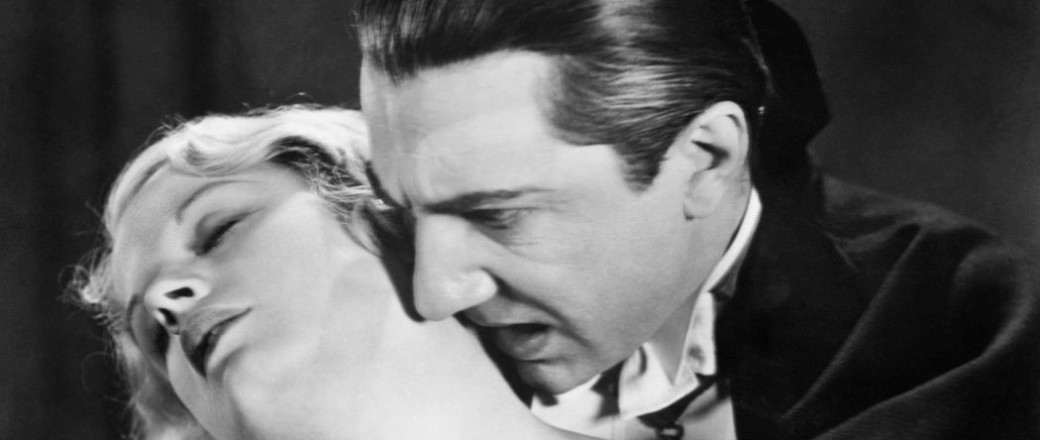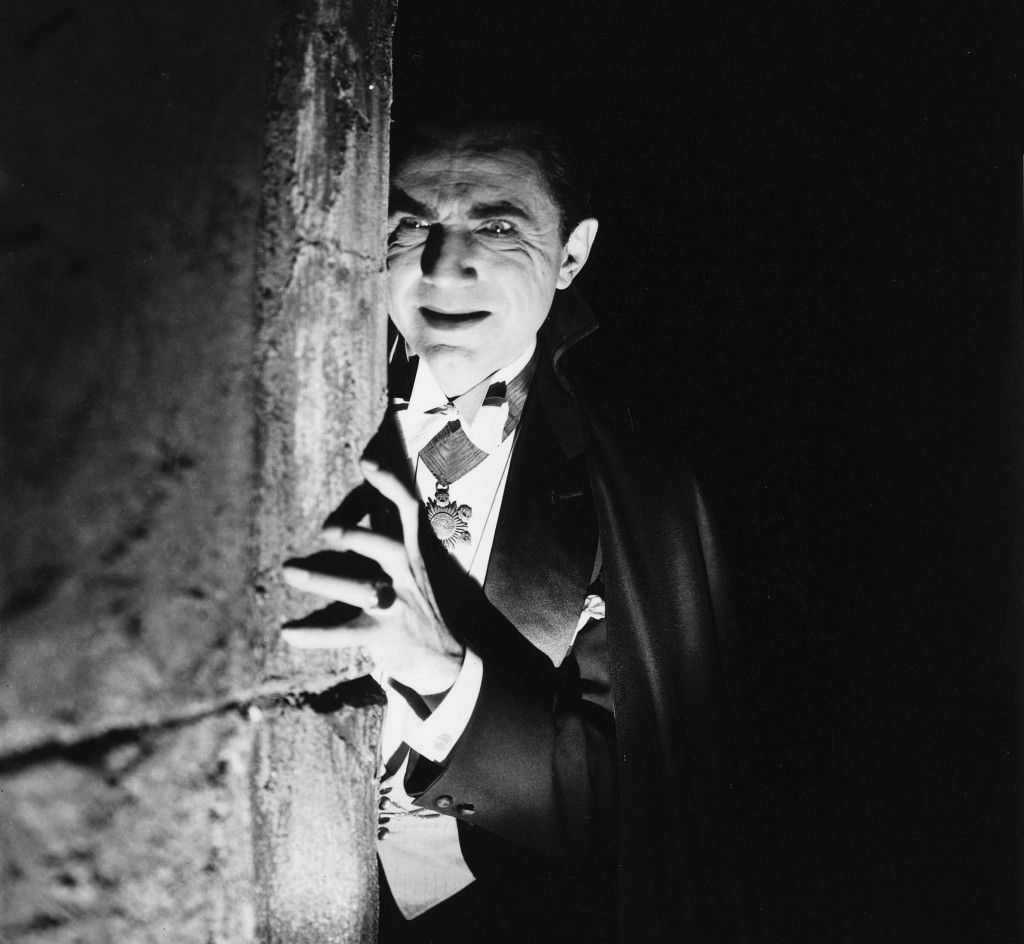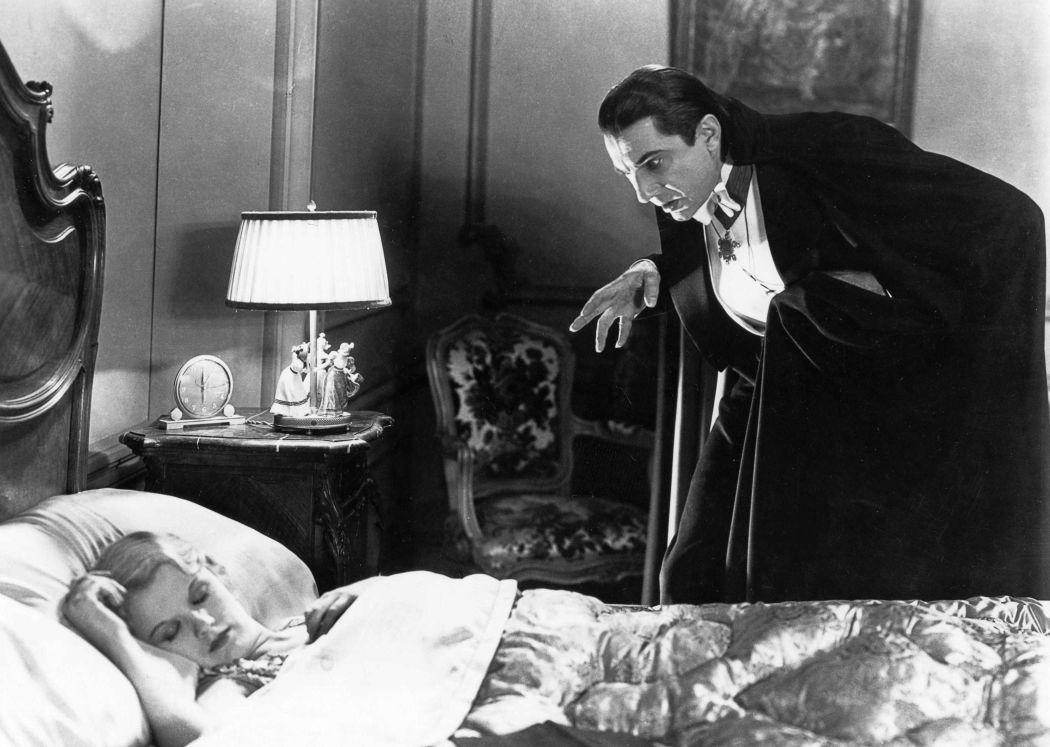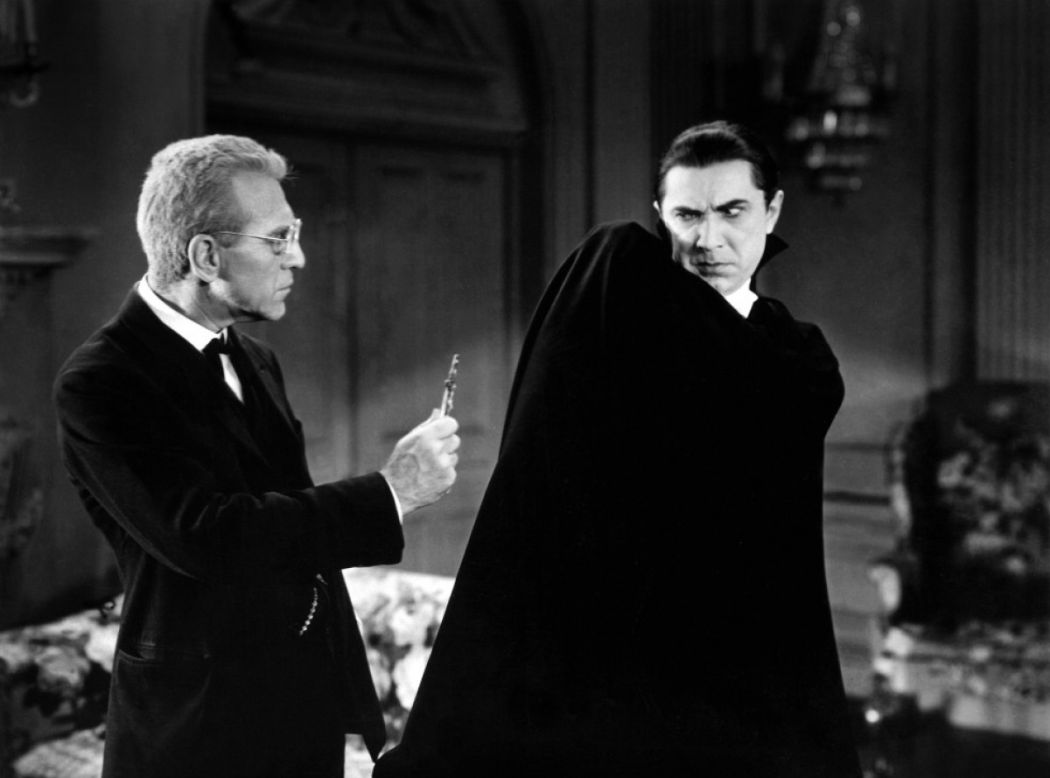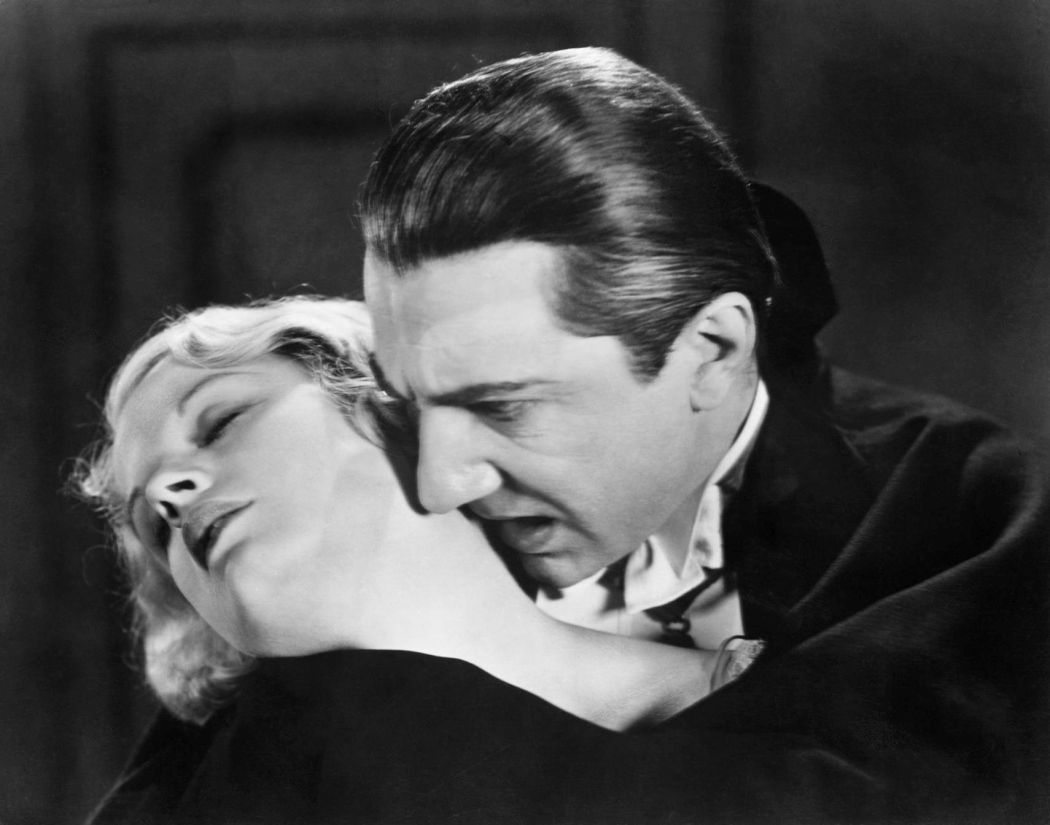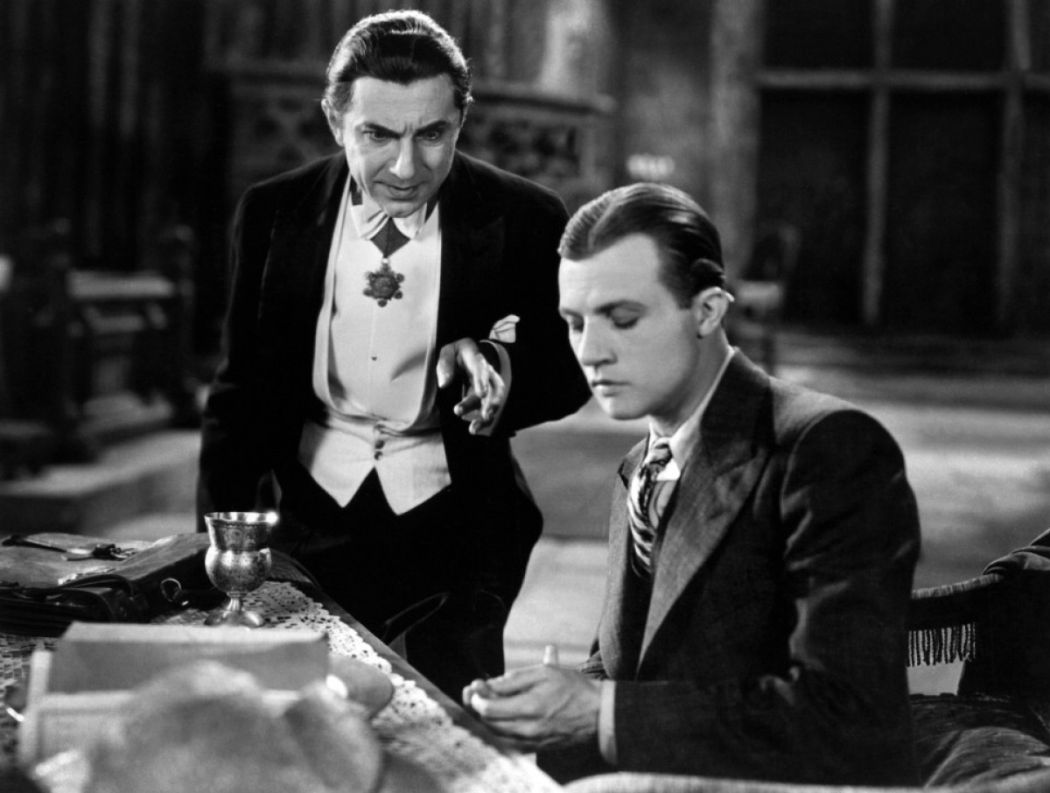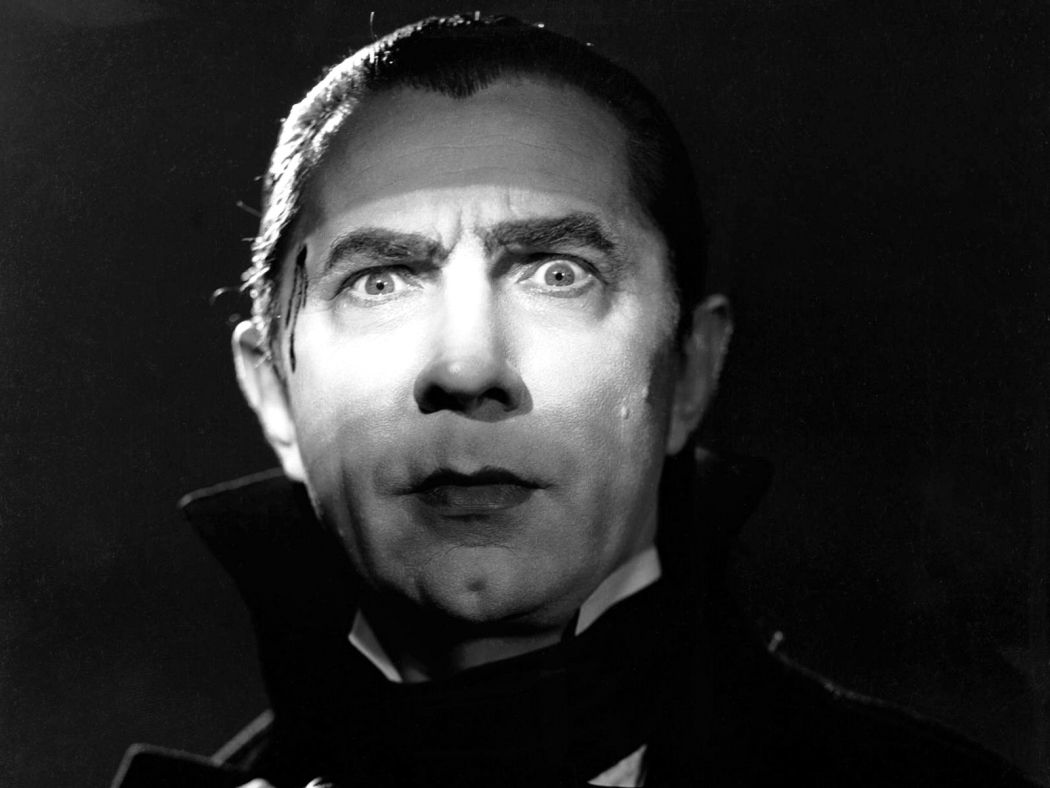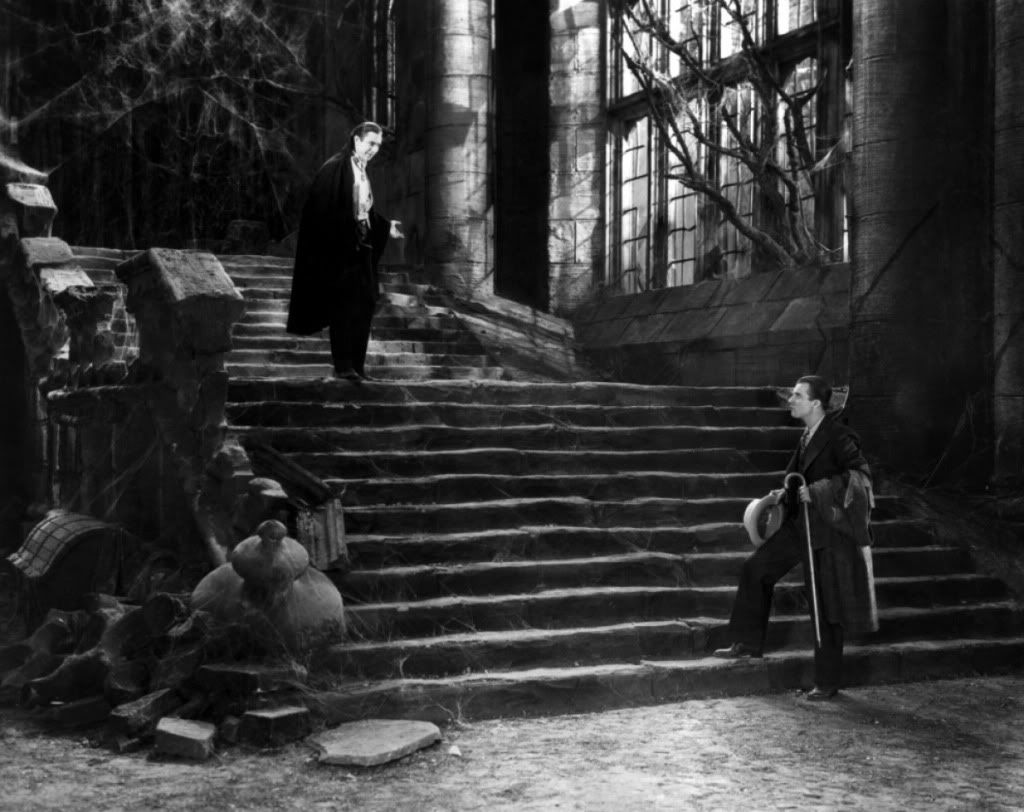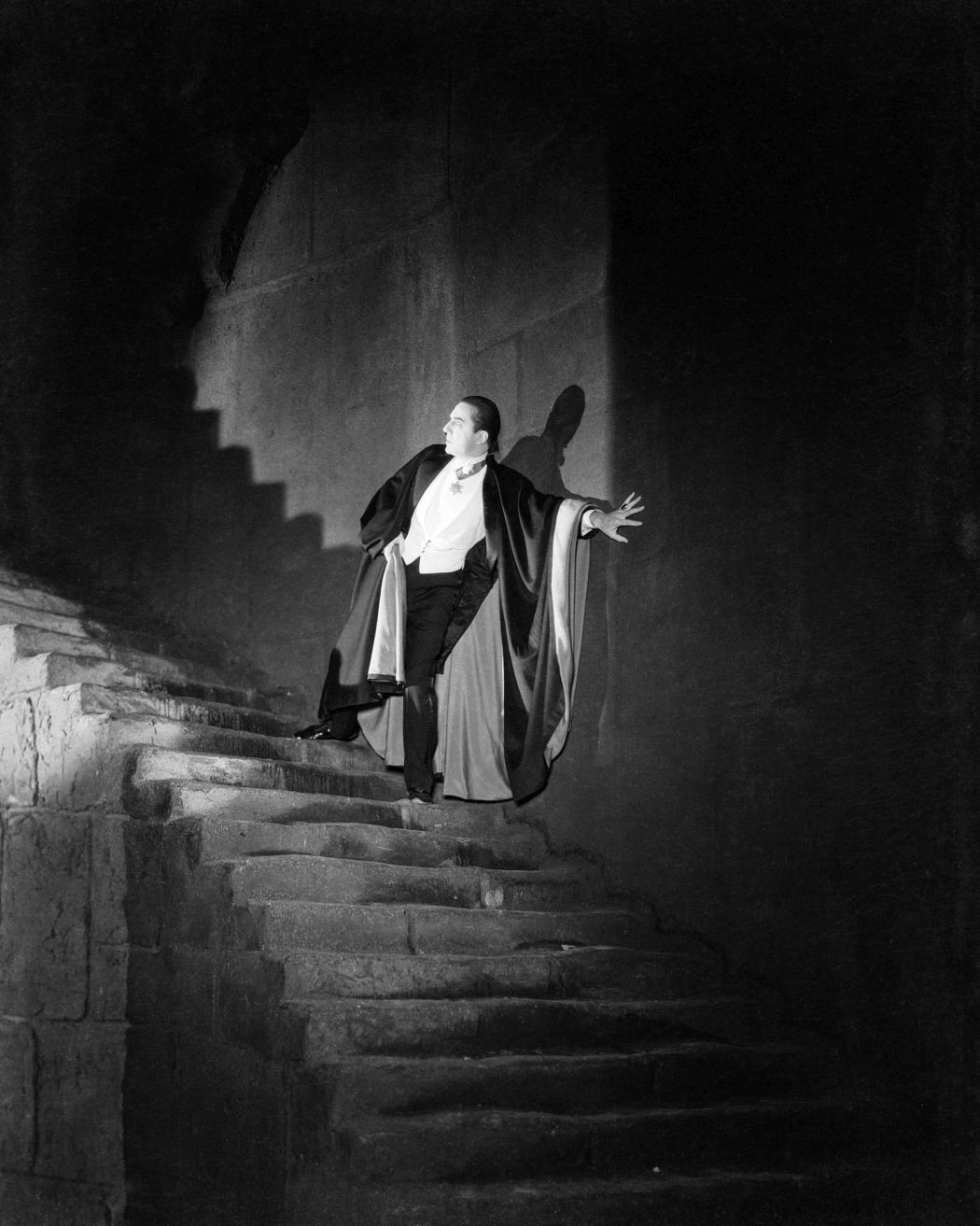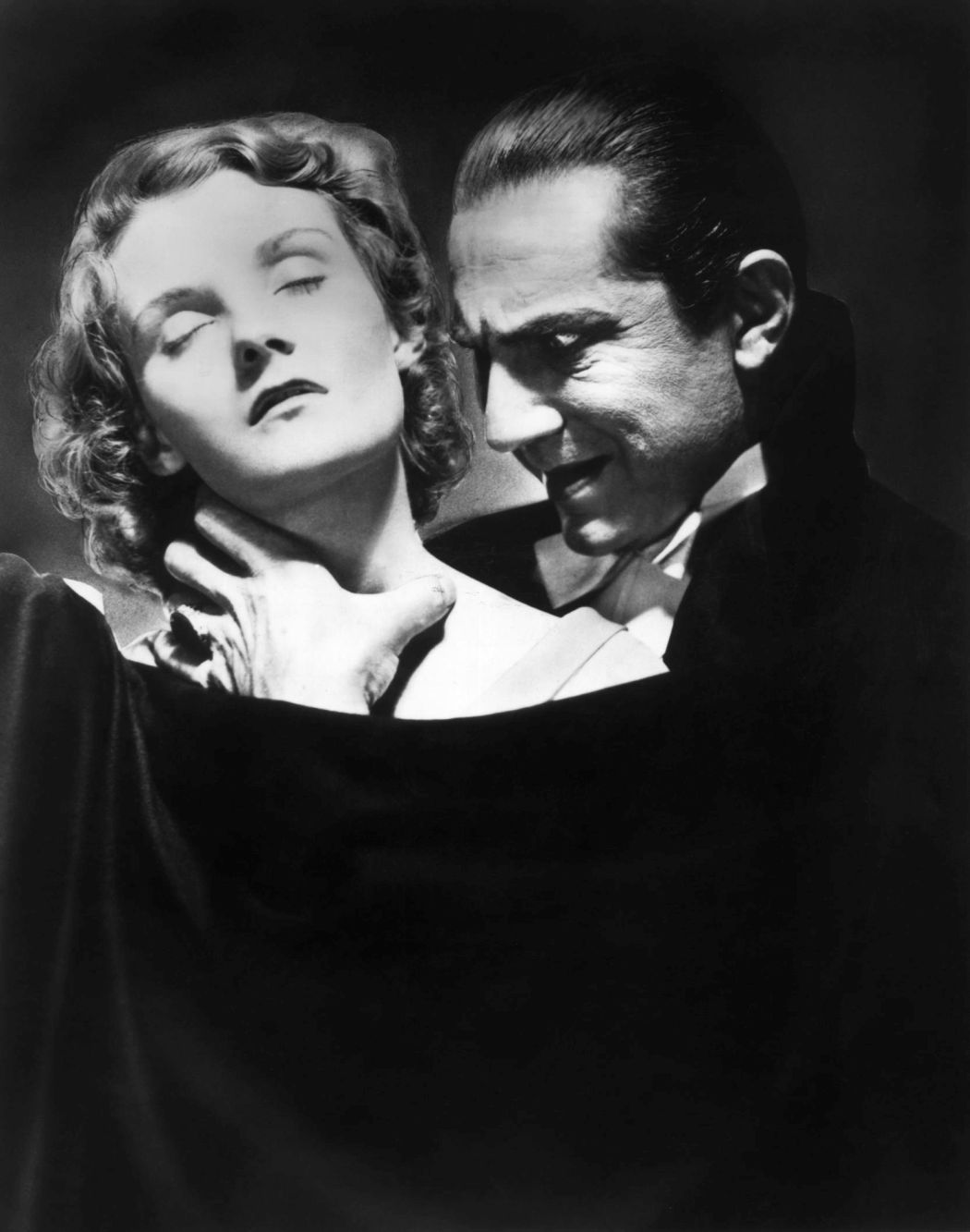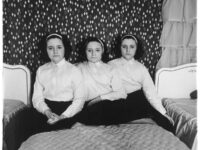Dracula is a 1931 vampire-horror film directed by Tod Browning and starring Bela Lugosi as the title character.
The concept of Dracula is taken from the stageplay as opposed to the novel, and the results are highly theatrical. Lugosi laughs evilly throughout; no wonder, his depiction of the Count-as-seducer is aeons removed from the feral creature represented in Nosferatu and is definitive – not until Coppola’s Bram Stoker’s Dracula in 1994 were there any real variations on the theme. Although Lugosi is never less than watchable, his opera cloak billowing behind him as he stalks the innocent, the rest of the movie creaks to the modern viewer. The supporting cast use their stage training to ham it up (this was the very first talking horror film and no one, least of all the director, was sure how to pitch it) and come across as grimacing and grotesque. The mise-en-scene are fine however – the movie practically invented the concept of “Mittel-Europe”, land of swirling mists, howling wolves, frightened peasants and crumbling castles owned by heavily accented individuals with strange eyes and an interesting taste in evening dress. It was very very successful for Universal and paved the way for a series of high profile horror classics.

